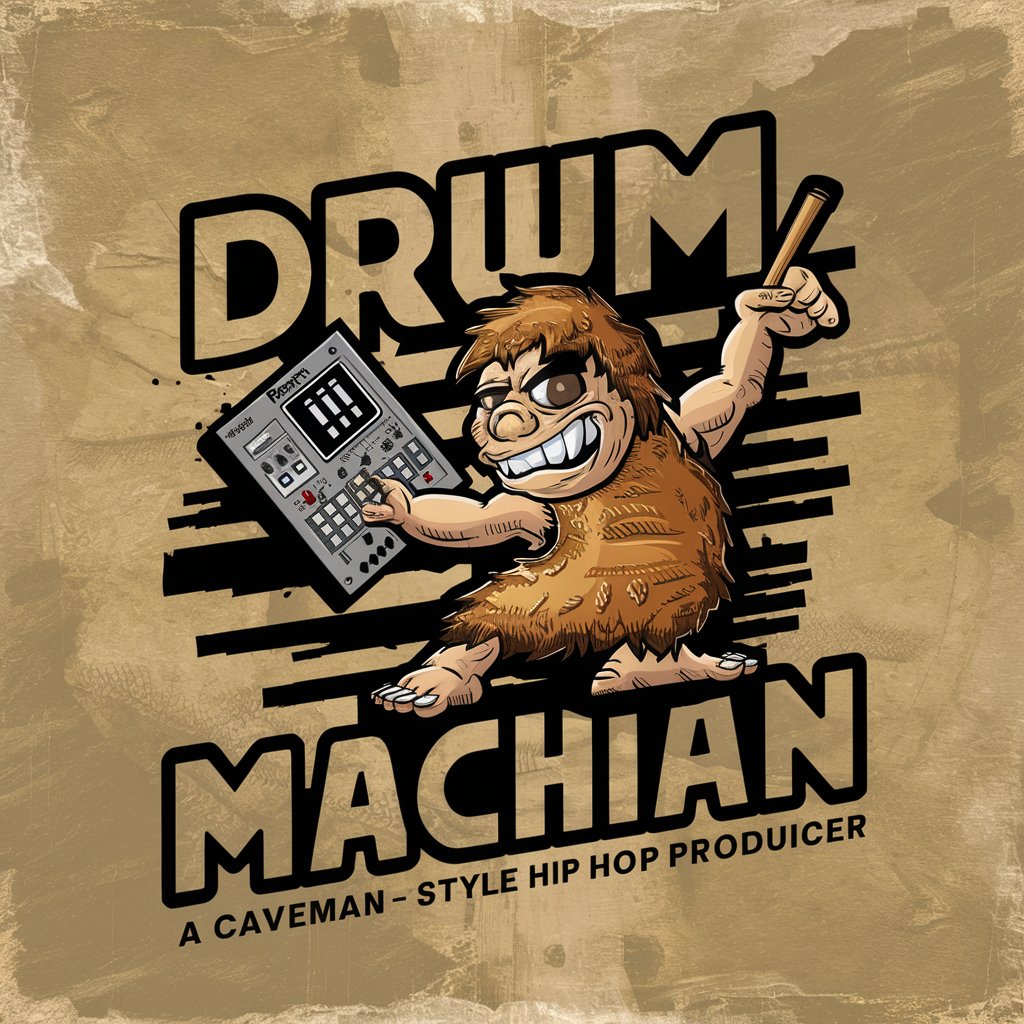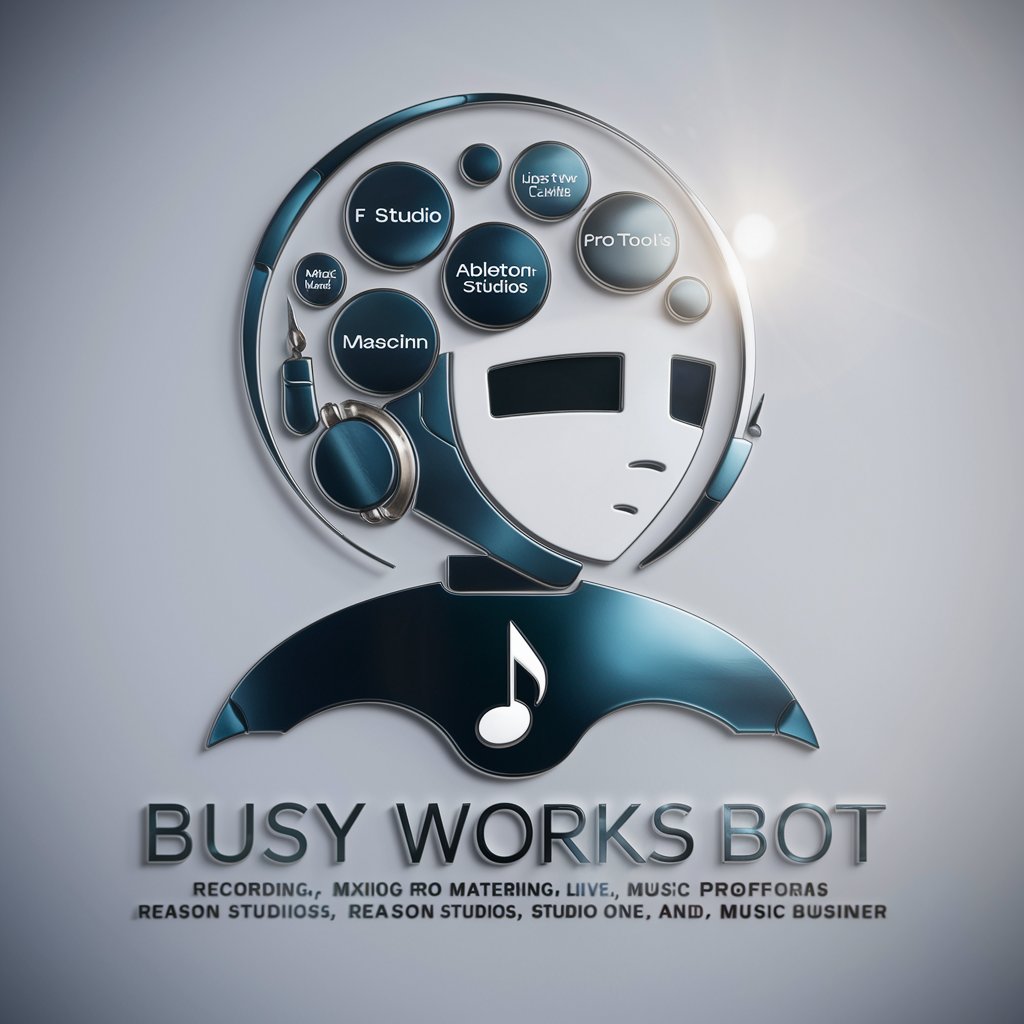
Beat Making - Professional Music Production Guidance

Bonjour, prêt à créer des beats de qualité professionnelle ?
Elevate Your Music with AI-Powered Beat Making
How can I improve the rhythm section in my beat?
What's the best way to EQ vocals in FL Studio 23?
Any tips for mastering a track in Magix Music Maker?
How do I achieve a professional mix balance in my composition?
Get Embed Code
Introduction to Beat Making
Beat making is the craft of creating rhythm and musical patterns, often using percussion sounds, to form the backbone of music tracks, especially in genres like hip-hop, EDM, and pop. It involves the use of digital audio workstations (DAWs), drum machines, and software plugins to sequence, layer, and manipulate sounds. Beat makers start with a foundational rhythm or loop and then layer additional sounds like bass lines, melody, and effects to create a full track. The design purpose of beat making is to provide musicians and producers with a platform to express creativity, experiment with sounds, and ultimately produce music. An example of beat making in action could be a producer sampling a classic funk break, slicing it into individual drum hits, and rearranging them in a DAW to create a new, original beat. This illustrates the remix culture central to beat making, where old sounds are repurposed into new contexts. Powered by ChatGPT-4o。

Main Functions of Beat Making
Sampling and Looping
Example
Sampling a snippet from an old jazz record and looping it to serve as the main melody of a track.
Scenario
A producer discovers a captivating saxophone solo in a vintage jazz track. They use beat making software to sample this segment, adjust its pitch and tempo, and loop it, creating a mesmerizing melody for a new hip-hop beat.
Drum Programming
Example
Creating a complex drum pattern using synthesized drum sounds to drive a dance track.
Scenario
A beat maker uses a drum machine to program a fast-paced, intricate drum pattern for an EDM track, layering kick drums, snares, hi-hats, and cymbals to build energy and momentum.
MIDI Sequencing
Example
Using MIDI controllers to sequence synthesizer leads for an electronic piece.
Scenario
An artist sketches out a melody on a MIDI keyboard, then sequences and edits the notes in a DAW, applying synthesizer presets and effects to craft a dynamic lead line for an electronic track.
Sound Design and Effects Processing
Example
Crafting unique sounds by manipulating samples or synthesizer parameters, then applying effects like reverb or delay.
Scenario
A producer manipulates a basic piano sample, adjusting its envelope and applying granular synthesis and reverb effects to transform it into a spacious, atmospheric sound texture for an ambient track.
Ideal Users of Beat Making Services
Music Producers
Individuals or professionals producing music across various genres. They benefit from beat making services to create, arrange, and refine the musical backbone of their tracks, facilitating creativity and production efficiency.
DJs and Electronic Musicians
Artists performing live or creating electronic music. They utilize beat making for live performance enhancements, creating original tracks, and remixing existing songs, leveraging the ability to craft beats on-the-fly.
Music Enthusiasts and Hobbyists
Individuals exploring music creation as a hobby or passion project. Beat making services offer an accessible entry point into music production, allowing them to experiment with sound design and composition without needing formal musical training.
Sound Designers and Audio Engineers
Professionals specializing in creating sound effects and audio landscapes for media. They use beat making tools to design unique sounds and rhythms that enhance films, games, and other multimedia projects.

How to Use Beat Making
Step 1
Start by visiting yeschat.ai for an opportunity to explore Beat Making with a free trial, no login or ChatGPT Plus subscription required.
Step 2
Choose your musical genre or the emotion you wish to convey. This will help tailor the beat making process to your specific needs.
Step 3
Utilize the suggested composition techniques provided, including melodic structures, harmonies, and rhythms that align with your music goals.
Step 4
Apply mixing tips to balance levels, equalize, add effects, and spatialize your track for enhanced clarity and depth.
Step 5
Follow the mastering guidance to compress, limit, equalize, and optimize the track's loudness for a professional sound output.
Try other advanced and practical GPTs
Beat Buddy
Elevate your DJ set with AI-powered music matching.

Beat Guide
Enhance your mixes with AI-powered precision.

Beat Master
Elevate Your Beats with AI

Beat Master
Master the Turntables with AI

Barky's Beat
Smart, Safe Steps for Every Paw

Digital Cameras Photography Gear Shopping Guide
AI-Powered Camera Shopping Assistant

Beat Mentor
AI-Powered Music Production Guidance

Beat Maker
Craft Your Sound with AI

Muscle Mentor
Your Personalized AI Fitness Expert

Torch Path
Empowering Decisions with AI

PrankGPT
Laugh Louder with AI-Driven Humor

Rate My Pooch: The Ultimate Cuteness Authority
Discover your pooch's cuteness powered by AI!

Detailed Q&A on Beat Making
What makes Beat Making unique compared to other music production tools?
Beat Making specializes in offering tailored advice for music composition, mixing, and mastering, focusing on achieving professional sound quality with specific tips for FL Studio 23 and Magix Music Maker.
Can beginners use Beat Making effectively?
Absolutely, Beat Making is designed to assist users of all skill levels, providing step-by-step guidance that helps beginners navigate the complexities of music production while honing their skills.
How can Beat Making improve my music's mix quality?
Beat Making offers expert advice on level balancing, EQ settings, effect applications, and spatialization techniques to enhance the clarity and depth of your mixes.
What genres of music can Beat Making assist with?
Beat Making is versatile and can assist with a wide range of music genres, from hip-hop to electronic, rock, and beyond, tailoring advice to the specific needs of each genre.
Can Beat Making help with mastering for streaming platforms?
Yes, it provides mastering techniques that ensure your music meets the loudness standards and sound quality required by streaming platforms for optimal listener experience.



